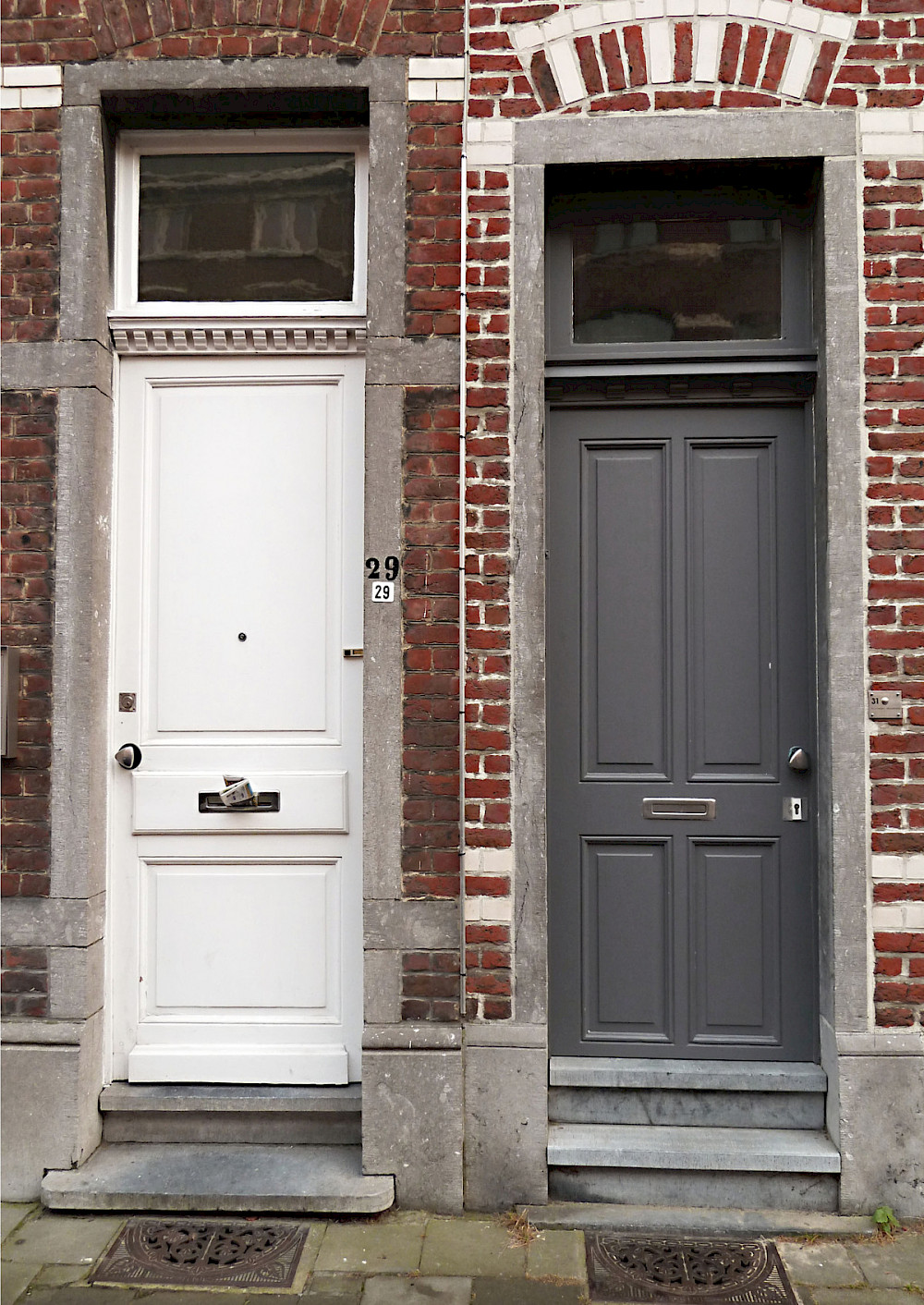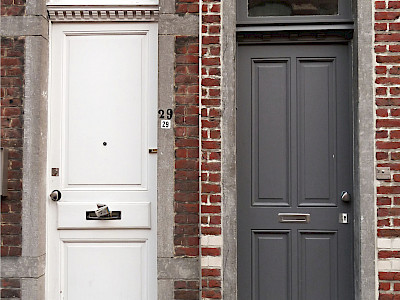03.05, 04.05, 07.05, 08.05, 10.05, 11.05.2014
Where is the link between artistic creation and the lives of people more palpable than in the confines of the living room? In Untitled (Brussels), Sarah Vanhee points the way through the neighbourhood around WIELS. You discover the intimacy of someone’s living room, where the resident presents you with an artwork that is precious to him or her. Personal stories and theoretical reflections whirl past each other. The value of the work of art depends on the meaning that is given to it by the two strangers unknown to each other at that time. Language plays a central role. Which parameters and perspectives do we use in this conversation? Do we judge art differently in an individual living room than in crammed museums or at prestigious biennials? What do the artworks reveal (or hide) about the worlds they form part of and about the people who love them? On a human scale, Untitled places the discourse on art in question and assesses the value thereof to individuals and society. Everyone is welcome!
Untitled
For several years now, I’ve routinely lugged the painting The weeping gypsy, which I inherited from my grandmother, between my various placesof residence, even though I have mixed feelings about it. On the wall next to it hangs a poster with a drawing of the New York skyline, by outsider artist Wesley Willis – very popular with visitors who come to my house.
The artistic project Untitled, by Sarah Vanhee, is about that intimate relationship with the artwork you exhibit in your own home, and how this is spoken about. She does this by letting the local residents of the WIELS Centre for Contemporary Art comment on the artworks in their living room, hallway, bedroom, … Spectators visit spectators.
By way of this focus on spectatorship, Untitled is connected to another project by Sarah Vanhee, namely Lecture For Every One, a performance in which, in meetings with fire-fighters, company managers, Moroccan women’s groups, taxi drivers, council members, and others, she brings a text about society today. Sarah Vanhee thereby refers to the ancient Greeknotion of parrhesia, or ‘speaking boldly’, that is, ‘words that are spoken publicly in a way that endangers the speaker’. In doing so, she performs outside the normal paths of the art world, museums, and theatres, from a representation of the public, collective society. Untitled seems to mirror this performance, by tilting public questioning towards the codes of art itself. Both works substantially scan the boundaries of art.
In Untitled, the artist turns the tables and gives the microphone to the WIELS locals. The question here is how the language of these participants relates to the speaking habits of the art world, of gallery owners and curators, museum guides and instructional staff, art critics, the teachers of an art school, the columnists who defend or problematize subsidies, the artist who shows the collector around his studio. The showing, decorating, tour-giving and positioning with which one showsone-self to be a member of the art world. Vanhee is asking us to talk about art, the theory forming that really came to the fore in recent yearswith post-conceptual art. What does it mean when you give a specificexplanation to a work of art? And do we judge art differently in thefamily circle, where the museum or biennial authority is absent?
One increasingly considers contemporary art as a conversation, a certainrelationship with the image. Since the ‘l’art pour l’art’ of the 19th century,and since the ready-made, 20th-century art evolved into an institutionaldefinition of art. Thereby, an object or gesture is ‘baptised’ into art becausean artist or viewer calls it art, or because it receives a place withinthe institution of the museum. This implies that everyone and everything in the museum can be included, can be art. Untitled puts that logic into practice: something is considered art the moment the participants call it art. Hence the importance of the meeting, in which it is argued whether something is art.
Art-as-conversation is also an offshoot of conceptual art, which is still about the concept behind the object. In post-conceptual art, immaterial,process-oriented, and discursive concepts take the upper hand, as perthe current post-Fordist economic system in which interpretation, exchange,and distribution are themselves products. Today this meansthat artists consider the organising of symposia and debates as a formof art. Sarah Vanhee sees art-critical texts as part of the artistic work.Art philosophers like Thierry De Duve, and especially Arthur Danto, demonstrated that this high self-awareness of art, the ‘art as philosophy’,could well result in the end of art. In a certain way, the post-conceptual approach to art has, indeed, created a split with the public. As a result,the social position of art became problematized. Sarah Vanhee sees the public’s uneasiness with contemporary art as a kind of discomfort about something one does not know. “Maybe museums have played a role here,by giving the impression that something needs to be understood in a particular way. The artist Rineke Dijkstra, for example, filmed school children looking at a Picasso and asking themselves questions, naming what they saw, making associations. That may be enough.”
Art philosopher Bart Verschaffel connects the conversation about art with its role in society, “an operation performed on artworks whereby they leave their place and unpredictably land up elsewhere.” Sociologist Rudi Laermans also sees the exemplary democratic role of art to be incontinuous, lively openness of discussion, in which the ‘art system’ is constantly questioned and subjected to very essential identity testing,without which the system ‘crashes’. This political dimension of talking about art is thus something other than the artist who explains, contextualises,and ultimately insures that his work meets the demands ofthe creative economy.
So you can ask yourself if the words of the locals contain an emancipator yelement. For French philosopher Jacques Rancière, someone emancipates himself if he speaks from a position other than the one assigned to him.The testing of the flavour of another class, doing something other than your own job, using the speaking manner of the privileged, listening to‘speaking that comes from elsewhere’, that’s what it’s about. According to Rancière, it is therefore very important as to who obtains the right to speak and who does not. The personal views and interpretations of the local residents in Untitled embody this ‘other’. “They may use their ownwords or sometimes be incoherently self-contradictory, they know other things than you and I know”, says Sarah Vanhee. “This is also a form of theorising about art, one does not need to be an art expert to do so.”
In Untitled, people also speak explicitly ‘through’ the physical presence of the art object. Sarah Vanhee suggests that the artwork relieves the situation of the visit or conversation, acting as a kind of buffer. Forinstance, it allows you to not constantly having to look at each other orfeel yourself looked at. It’s the work that is being contemplated. It is possible, thanks to the work of art, to speak with one another. The work takes the responsibility away and puts things into a symbolic order.
Rancière also finds it of great importance for the artwork to be a ‘third’element in a discussion, because this makes it possible to escape the logic of having to think and feel the same. The artwork creates a space in which interpretations and opposing interpretations are possible. The work of art as a kind of inducement to learn to think. Of this, the artist says: “The participants of Untitled taught me to take an object seriously,what it is to have it in your everyday surroundings.”
Thus, Untitled certainly springs from a desire to make speaking aboutart more inclusive, more widely conceivable. It’s dizzying when you extend art theory to speaking about music, film, and pop culture – asin ‘2,121,356 people are talking about this’ on Facebook. Thus SarahVanhee poses the question of who has the authority to speak. “I wanted people to talk about art, which you otherwise do not hear. To listen to the spectator as a kind of eyewitness to the evolution of contemporary art, to its institutions, but also to their own voices and the objects that appear in their own lives.”
By allowing spectators to visit spectators, Vanhee is, in fact, replacing the slogan ‘everyone is an artist’ with ‘everyone is a spectator’. Interestingly, public participation in Untitled advocates not losing subjective spectatorship. Sarah Vanhee also then asks herself: “What’s the risk if everything is participation?” In addition, she is interested in the encounter between spectators, the relationships that a particular language brings into the everyday. This interest in social relationships can befound with many contemporary artists, often stemming from a critique of liberal individualism. Untitled is specifically driven by the dynamicsof the invitation. Due to the fact that you are a guest in someone’shome, you will be pushed into a sort of modest position. In the dialogue between spectators, a personal relationship arises that is often lackingin the anonymous museum. The viewer is invited to vent their individual viewing experience, to experience a subjective work.
Interestingly, of course, it is ultimately the artist who invites the spectators into the house of another. Untitled can then only expand the speaking about art via the benchmark or the border of artistry.
Sarah Késenne
Concept & realization
Sarah Vanhee
Assisted by
Anne Becker
With
Hélène Champagne, Florence Dekoster, Ismael Dembele, Coline De Reymaeker, Fanny and Fouad, Meriam Ghojdam, Geneviève Kinet, Ilias Najem, Matthieu Lietaert, Hannelore Muyllaert, Laeticia Putters, André Vdcam, Julie Wauters and Edmond Jamar, a.o.
Thanks to
Marika Ingels, Kristien Van den Brande, Phéline Thierens & Bains Connective
Presentation
Kunstenfestivaldesarts, WIELS
Production
CAMPO (Ghent)


